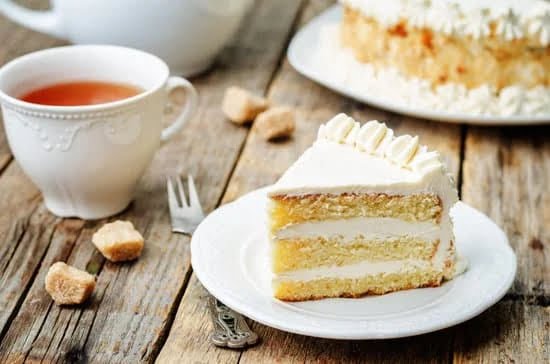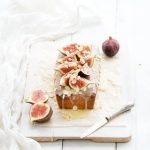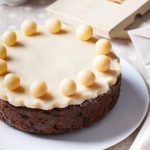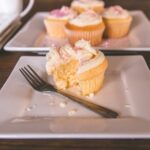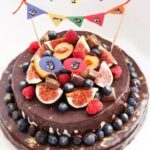Are you ready to take your cake decorating skills to the next level? Look no further than the best icing recipe that will transform your creations from ordinary to extraordinary. In this article, we will guide you through the world of icing and show you how to create stunning decorations for your cakes. Whether you’re a beginner or an experienced baker, mastering the art of icing will elevate your cake decorating game and impress your friends and family.
When it comes to cake decorating, understanding different types of icing is essential. We will break down the three most common types: buttercream, royal icing, and fondant. Each type has its own unique properties and applications, and by learning about them, you’ll be able to choose the best icing recipe for each decoration technique you want to try.
But what is the secret ingredient that makes all the difference in creating gorgeous decorations? We’ll unveil it in this article. By unearthing the best icing recipe, we’ll provide you with a reliable base that can be used for various designs and techniques. No more trial and error – with our tried-and-true recipe, your creations will always turn out perfect.
So get ready to unleash your inner Michelangelo as we guide you step-by-step through the art of cake decorating. From basic techniques to intricate details, we’ll cover it all. Stay tuned as we delve into buttercream bliss, royal icing elegance, and fondant fun – exploring each type of icing in depth along with their corresponding best recipes.
Your journey to becoming a cake decorating pro starts right here. Get ready to showcase stunning examples achieved with the best icing recipe and put your newfound knowledge into practice. Together, let’s create edible masterpieces that are not only delicious but also visually captivating. So grab your mixing bowls and spatulas because it’s time to embark on this sweet adventure.
Understanding Different Types of Icing
When it comes to cake decorating, the type of icing you choose can make all the difference in achieving the desired look and texture. There are three popular types of icing that every aspiring cake decorator should be familiar with: buttercream, royal icing, and fondant.
- Buttercream: Buttercream is a classic and versatile icing that is loved for its smooth and creamy texture. It is made by creaming together butter and powdered sugar until light and fluffy, often with the addition of vanilla extract or other flavorings.
Buttercream can be easily tinted with food coloring to create any desired color and can also be piped into various designs using different piping tips. This type of icing is perfect for covering cakes with a smooth finish or creating decorative borders and flowers. - Royal Icing: If you’re looking to create intricate details on your cakes, royal icing is the go-to choice. Made from egg whites or meringue powder mixed with powdered sugar, royal icing dries hard after being piped onto a cake.
Its stiff consistency allows for intricate designs such as lacework, stringwork, or delicate flowers that hold their shape once dry. Royal icing can also be used to assemble gingerbread houses or to create 3D decorations that stand upright on cakes. - Fondant: Fondant is a pliable icing that can be rolled out into thin sheets and draped over cakes for a smooth, polished appearance. Made primarily from sugar, water, and gelatin or vegetable shortening, fondant provides a sleek canvas for intricate designs or sculptural elements like cake toppers or figures.
It can be colored using gel food coloring and molded into different shapes easily. Fondant allows decorators to achieve unique finishes such as marble effects or metallic textures that may not be achievable with other types of icings.
Understanding the characteristics and uses of each type of icing will help you choose the right one for your cake decorating project. Whether you desire a smooth and creamy finish with buttercream, delicate details with royal icing, or a sleek sculptural creation with fondant, knowing the differences between these three icings will allow you to elevate your cake decorating game.
Unleashing Your Inner Michelangelo
Cake decorating is not just a mere task, but an art that allows you to unleash your creativity and transform a simple cake into a masterpiece. Whether you are a beginner or have some experience in cake decorating, mastering the art requires dedication, practice, and the right techniques. In this step-by-step guide, we will explore the key aspects of cake decorating and provide you with valuable tips to help you become a cake decorating pro.
- Start with a Well-Prepared Cake: Before diving into the decoration process, it is crucial to ensure that your cake is well-prepared. This includes using quality ingredients, leveling the cake layers for an even surface, and properly cooling them before icing. A strong foundation is essential for creating a stunning decorated cake.
- Choose Your Icing Wisely: The type of icing you use can greatly impact the overall appearance and taste of your decorated cake. Buttercream, royal icing, and fondant are popular choices with their own unique characteristics. Consider factors like ease of use, desired texture, and design requirements when selecting your icing.
- Equip Yourself with Essential Tools: Having the right tools can make all the difference in your cake decorating journey. Invest in quality spatulas, piping tips and bags, offset spatula for smoothing icing, modeling tools for fondant work, and other necessary equipment according to your preferred techniques. These tools will enable you to achieve professional-looking decorations with precision.
Now that you have familiarized yourself with these initial steps for successful cake decorating let’s move forward into exploring further sections on specific types of icings and recipes along with useful tips and examples that will inspire you throughout your journey as a cake decorator.
| Step | Description |
|---|---|
| 1 | Start with a Well-Prepared Cake |
| 2 | Choose Your Icing Wisely |
| 3 | Equip Yourself with Essential Tools |
The Secret Ingredient
Making beautifully decorated cakes requires more than just skill and creativity – it also requires the perfect icing recipe. The right icing can elevate your cake decorating game and take your creations to the next level. In this section, we will explore the secret ingredient that makes for the best icing recipe to create gorgeous decorations.
Finding the Perfect Balance
When it comes to icing, striking a balance between taste and texture is essential. You want an icing that not only looks amazing but also tastes delicious. The best icing recipe will have a smooth and creamy consistency, making it easy to work with while providing the perfect canvas for your creative designs.
One key factor in achieving this ideal texture is finding the right ratio of ingredients. A combination of confectioners’ sugar, butter or shortening, a liquid (such as milk or cream), and flavorings (such as vanilla extract) is often used as a base for buttercream frostings. Experimenting with different ingredient ratios can help you find the perfect balance that works for you.
Making It Your Own
While there are standard recipes for various types of icing, don’t be afraid to put your own twist on them. Adding unique flavors like citrus zest, extracts such as almond or coconut, or even small amounts of liqueur can add depth and complexity to your icing.
Additionally, consider incorporating food coloring into your recipe if you want to create colorful and vibrant decorations. Gel-based colors work best as they won’t alter the texture of your icing. By experimenting with different combinations of flavors and colors, you can truly make your cake decorations stand out.
Considering Dietary Restrictions
In today’s world where dietary restrictions are common, it is important to consider alternatives for those who cannot consume certain ingredients. Luckily, there are plenty of options available when it comes to creating an icing recipe that suits different dietary needs.
For those following a vegan or plant-based diet, substituting butter with vegan margarine or coconut oil and using non-dairy milks can create a delicious vegan icing. Similarly, for individuals with gluten allergies or sensitivities, replacing regular flour with gluten-free flour blends can ensure your icing is safe for consumption.
Finding the best icing recipe to create gorgeous decorations requires experimentation, creativity, and a willingness to explore different ingredients and flavors. By striking the perfect balance between taste and texture, personalizing your recipe, and considering dietary restrictions, you’ll be well on your way to creating show-stopping cake decorations that will leave everyone in awe.
Buttercream Bliss
When it comes to cake decorating, buttercream icing is an essential recipe to have in your repertoire. This smooth and creamy icing not only adds a delicious flavor to your cakes but also provides a versatile medium for creating beautiful designs. Whether you’re a beginner or an experienced decorator, mastering the art of buttercream can take your cake decorations to the next level.
The Basics of Buttercream
Buttercream icing is made from a mixture of butter, powdered sugar, and flavorings such as vanilla extract. It has a soft, creamy texture that is perfect for spreading on cakes and piping intricate designs. The key to achieving the perfect consistency lies in properly creaming the butter before gradually adding the sugar. This process creates a light and fluffy texture that holds its shape well.
Exploring Different Variations
One of the reasons why buttercream is so popular among cake decorators is its versatility. There are several variations of buttercream icing, each with its own unique characteristics. American buttercream is the most common type, made with butter and powdered sugar. Swiss meringue buttercream is lighter and creamier as it involves whipping egg whites with sugar before adding softened butter. Italian meringue buttercream incorporates a sugar syrup into whipped egg whites for added stability.
Getting Creative with Buttercream Designs
Buttercream icing provides endless possibilities for creative cake decoration. With just a basic set of piping tips and some food coloring gel, you can create stunning floral patterns, intricate lace designs, or even sculpted figures on top of your cakes. The smooth texture of buttercream allows you to easily blend colors together or create various textures by changing your piping techniques.
Mastering the art of buttercream decoration takes practice, patience, and experimentation. Don’t be afraid to try new techniques and learn from your mistakes. With time, you’ll develop your own unique style and create breathtaking cake designs that will amaze your friends and family.
Buttercream icing is undoubtedly a versatile and delicious choice for cake decoration. Whether you’re looking to create a classic buttercream-frosted cake or experiment with intricate piping designs, this recipe is sure to elevate your decorating game. So grab your spatula, frosting bags, and get ready to embark on a blissful journey of buttercream creativity.
Royal Icing Elegance
When it comes to creating stunning and intricate designs on cakes, royal icing is the go-to choice for many professional cake decorators. This smooth and versatile icing is perfect for adding delicate details and intricate patterns that can elevate any cake to a work of art. In this section, we will explore how to craft these exquisite designs using the best royal icing recipe.
To start, let’s take a closer look at what makes royal icing so special. Royal icing is made from a mixture of powdered sugar, egg whites or meringue powder, and water. Unlike other types of icing, royal icing dries hard after application, which allows for more detailed decorations that hold their shape. Its smooth consistency makes it easy to pipe fine lines, create intricate lace patterns, or even sculpt delicate flowers and figures.
To craft delicate designs with royal icing, you will need the right tools and techniques. Piping bags fitted with various tips are essential for achieving different effects such as dots, scrolls, and lettering. A steady hand and good control over pressure are key skills necessary for creating clean lines and consistent shapes. It’s also important to practice patience when working with royal icing as it takes time to dry between layers or different colors.
| Royal Icing Recipe Ingredients | Measurements |
|---|---|
| Powdered sugar | 2 cups |
| Egg whites or meringue powder | 4 tablespoons |
| Water | 2-3 tablespoons |
Now that you know the basics of royal icing and what it takes to craft delicate designs, it’s time to get creative. Experiment with different piping tips, techniques, and colors to create your own unique masterpieces.
Whether you’re decorating a wedding cake or a batch of cookies, royal icing will allow you to add that touch of elegance and sophistication that will impress your guests. So go ahead, let your creativity soar and create stunning designs with the best royal icing recipe for intricate details.
Fondant Fun
In the world of cake decorating, fondant is a beloved and versatile icing that allows for endless creativity and beautiful designs. Fondant is a smooth, pliable icing that can be rolled out and draped over cakes to create a flawless, polished finish. But what makes it truly special is its ability to be sculpted into intricate shapes and designs, making it the perfect icing recipe for creating stunning cake toppers.
To get started with fondant, you’ll need a few key tools and ingredients. Here’s what you’ll need:
- Fondant: You can either make your own fondant from scratch using ingredients like gelatin, glucose syrup, and confectioners’ sugar or purchase pre-made fondant from a store.
- Rolling pin: A smooth rolling pin will help you roll out the fondant to your desired thickness.
- Fondant smoother: This tool will help you flatten the fondant onto the cake and smooth out any wrinkles or air bubbles.
- Gel food coloring: To add color to your fondant, opt for gel food coloring rather than liquid food coloring, as it won’t alter the consistency of the icing.
- Fondant molds: These mold sets come in a variety of shapes and designs that can be used to create intricate details for your cake toppers.
Once you have all your tools ready, it’s time to start sculpting. Here’s a step-by-step guide on how to use fondant to create spectacular cake toppers:
- Knead the fondant until it becomes soft and pliable.
- Roll out the fondant on a clean surface dusted with confectioners’ sugar or cornstarch to prevent sticking.
- Use cookie cutters or specialty cutters to cut out shapes from the rolled-out fondant.
- Use your fingers or small shaping tools to add texture or details to the shapes.
- Attach smaller fondant pieces together using a small amount of water or edible glue.
- Allow the fondant decorations to dry and harden before placing them on your cake.
The beauty of fondant is that it can be used to create almost anything you can imagine. From delicate flowers and lace to figurines and intricate patterns, the possibilities are truly endless. So, let your creativity run wild and have fun sculpting spectacular cake toppers with the best fondant icing recipe.
Perfecting Your Technique
When it comes to cake decoration, having the right technique can make all the difference in creating a flawless and professional-looking finish. Whether you are a beginner or an experienced baker, there are always new tips and tricks to learn that can take your cake decorating skills to the next level. In this section, we will explore some valuable techniques, troubleshooting solutions, and expert advice to help you achieve the perfect cake decoration.
- Crumb Coating: One of the most important steps in cake decoration is crumb coating. This involves applying a thin layer of icing to seal in any crumbs before adding the final layer of frosting. To achieve a smooth crumb coat, make sure your icing is at room temperature and slightly thin consistency.
Using an offset spatula, spread a thin layer of icing over the entire cake, making sure to cover all the nooks and crannies. Once done, refrigerate the cake for about 15-30 minutes to allow the crumb coat to set before applying the final layer of frosting. - Piping Techniques: Piping is a popular method used in cake decoration to create intricate designs such as flowers, borders, and writing. To achieve clean and precise piping, it’s important to hold the piping bag correctly and apply even pressure while squeezing out the icing.
Practice your piping skills on parchment paper or wax paper before attempting it on your cake. Start with simple designs and gradually move on to more complex ones as you gain confidence. - Troubleshooting: Even with careful planning and execution, sometimes things can go wrong during cake decoration. If you encounter issues such as air bubbles in your icing or uneven frosting texture, don’t panic. There are solutions for common problems that can help salvage your design.
For air bubbles, use a toothpick or needle to gently prick them and smooth the surface. If you have uneven texture or bulges, use a bench scraper or straight-edge spatula to carefully scrape off the excess icing and create a smoother finish.
By following these tips, practicing regularly, and being patient with yourself, you’ll be well on your way to mastering the art of cake decoration. Remember, perfection comes with time and experience, so don’t be discouraged if your first attempts aren’t flawless. With each cake you decorate, you’ll learn something new and improve your technique.
Showcasing Stunning Examples
In this section, we will explore some stunning examples of cake decorations that have been achieved using the best icing recipe. These examples will serve as inspiration for your own cake decorating endeavors and demonstrate the potential that can be unlocked with the right icing.
Floral Fantasy
One beautiful example of cake decoration achieved with the best icing recipe is a floral fantasy design. Delicate buttercream flowers are piped onto a smooth frosted cake to create a stunning garden scene. The intricate details and vibrant colors of the flowers bring the cake to life, making it an exquisite centerpiece for any occasion. With practice and patience, you too can master this technique and create your own floral masterpiece.
Geometric Glamour
Another impressive example featuring the best icing recipe is a geometric glamour design. Using royal icing, clean lines and precise shapes are piped onto fondant-covered cakes to create a modern and sophisticated look. The combination of bold colors and sleek patterns adds an element of style to any celebration. By following step-by-step instructions and practicing your piping skills, you can achieve this level of precision and make a statement with your cake decorations.
Whimsical Wonder
For those looking for a touch of whimsy in their cake decorations, an example that showcases the best icing recipe is a whimsical wonder design. Fondant is used to sculpt adorable characters or objects that sit atop a beautifully decorated cake. The possibilities are endless – from cute animals to themed designs – allowing you to let your imagination run wild. With some creativity and sculpting techniques, you can bring your own playful ideas to life using the best icing recipe.
These examples highlight just a few ways in which the best icing recipe can be used to achieve stunning cake decorations. Whether you prefer floral elegance, geometric precision, or whimsical charm, there is an endless array of possibilities to explore.
With practice, you can become skilled in creating your own unique designs and impressing your friends and family with your cake decorating expertise. So let these examples inspire you to create your own masterpieces and unleash your creativity in the world of cake decoration.
Ready, Set, Decorate
Now that you have gained a comprehensive understanding of different types of icing and learned the best icing recipes for cake decoration, it’s time to put your newfound knowledge into practice and create your masterpiece. Decorating cakes can be a fun and rewarding experience, and with the right techniques and creativity, you can achieve stunning results.
To get started, gather all the necessary tools and ingredients. Make sure you have your chosen icing recipe prepared ahead of time. Some essential tools for cake decorating include piping bags with various tips, offset spatulas for spreading icing, food coloring gels or powders for tinting icing, and any additional decorations such as sprinkles or edible pearls.
Once you have everything ready, begin by preparing your cake. Ensure that it is cooled completely before starting the decorating process. If you need to level the cake or remove any domed top, do so carefully using a serrated knife.
Next, apply a crumb coat layer of icing to the entire cake to seal in any loose crumbs. This will provide a smooth base for your final layer of icing. Use an offset spatula to spread a thin layer of icing over the entire surface of the cake, making sure to cover all sides evenly.
Now comes the exciting part – decorating your cake. Depending on your chosen technique and design, use piping bags with different tips to create borders, rosettes, flowers, or any other desired patterns. Practice on a separate surface beforehand if you are new to piping to ensure accuracy and control.
You can also add additional decorations such as sprinkles or edible pearls for an extra touch of flair. Remember to let your creativity shine through and experiment with different designs and color combinations.
Finally, step back and admire your masterpiece. Take photos of your creation from different angles to capture its beauty. Remember that practice makes perfect; don’t be discouraged if your first attempt doesn’t turn out exactly as planned.
Conclusion
In conclusion, the journey to becoming a cake decorating pro starts with finding the best icing recipe. Throughout this article, we have explored different types of icing, from buttercream to royal icing and fondant. We have learned how each type of icing can be used to create stunning decorations, from delicate designs to sculpted cake toppers.
But what truly sets apart a beautiful cake decoration is the icing itself. The secret ingredient that brings it all together. Whether you choose buttercream, royal icing, or fondant, the key is finding a recipe that yields the creamiest texture and allows for easy maneuvering.
By mastering the art of cake decorating and perfecting your technique, you can create flawless designs and stunning decorations. And with the inspiration provided by the examples showcased in this article, you can let your creativity run wild and bring your own unique vision to life.
So now it’s time to put your newfound knowledge into practice and start creating your own masterpiece. With the best icing recipe in hand and your inner Michelangelo unleashed, there are no limits to what you can achieve in cake decorating. So grab your piping bag, roll out your fondant, or whip up a batch of royal icing – your journey to becoming a cake decorating pro starts right now.
Frequently Asked Questions
What is the best frosting to use for cake decorating?
The best frosting to use for cake decorating ultimately depends on personal preference and the desired outcome of the decoration. Buttercream frosting is a popular choice due to its versatility and ability to hold intricate designs. It can be easily colored, piped, and shaped into various decorations such as flowers or borders. Fondant is another commonly used frosting for elaborate cake designs.
Its smooth texture allows for a flawless finish, making it ideal for creating clean lines and covering larger cakes. Ganache is often chosen for a sleek, glossy look and works well when poured over cakes or used as a base layer before adding other decorations. Ultimately, the best frosting will depend on the specific design and aesthetic you want to achieve.
Is buttercream or whipped frosting better for cake decorating?
Both buttercream and whipped frosting have their own unique properties that make them suitable for cake decorating depending on individual preferences. Buttercream has a rich and creamy taste that many people enjoy, but it also holds its shape well when piped or sculpted into intricate designs. It can be easily tinted, flavored, or smoothed onto cakes with ease.
On the other hand, whipped frosting is lighter in texture with a fluffy consistency that lends itself well to creating airy, delicate decorations. It can be used for piping or spreading onto cakes and has a slightly less sweet taste compared to buttercream. The choice between buttercream and whipped frosting ultimately comes down to personal preference in terms of taste and desired decoration style.
What kind of icing do you use to decorate a wedding cake?
When it comes to decorating a wedding cake, fondant icing is often the go-to choice among professional bakers due to its smooth finish and versatility in creating elegant designs. Fondant provides a pristine canvas for intricate decorations such as lace patterns, detailed embellishments, or even sculpted figures that can be applied directly onto the cake’s surface.
Additionally, fondant helps maintain moisture within the cake layers, which can be particularly beneficial for multi-tiered wedding cakes that need to stay fresh throughout an event. While buttercream frosting can be used for wedding cake decorations, it may not provide the same flawless and polished look that fondant icing offers.

Welcome to our cake decorating blog! My name is Destiny Flores, and I am the proud owner of a cake decorating business named Cake Karma. Our mission is to provide delicious, beautiful cakes for all occasions. We specialize in creating custom cakes that are tailored specifically to each customer’s individual needs and tastes.

